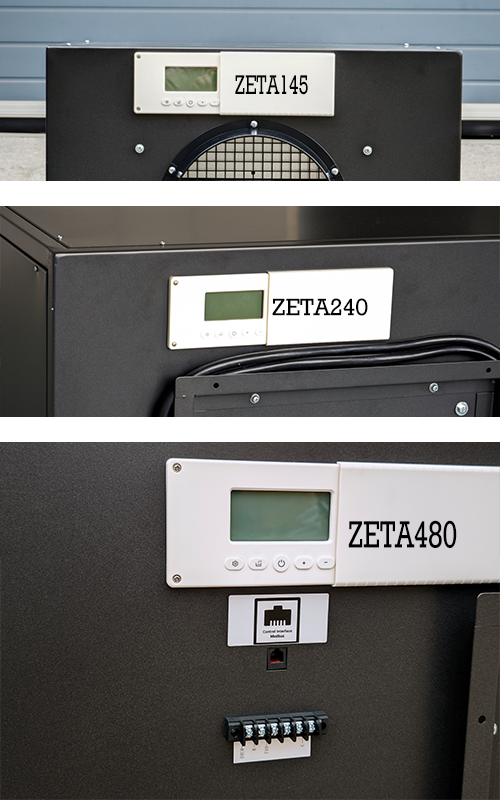Controlling a ceiling-mounted dehumidifier typically involves using the control panel or a remote control that comes with the unit. Keep in mind that the specific instructions may vary depending on the brand and model of your ceiling-mounted dehumidifier.
Here are the general steps of controlling a ZETA145 ceiling mounted dehumidifier.
1. Locate the Control Panel:
The control panel is usually located on the unit itself. It may be on the front of the dehumidifier.
2. Power On/Off:
Look for the power button on the control panel. Press it to turn the dehumidifier on or off.
3. Set the Desired Humidity Level:
You need to set a target humidity level. Use the controls to adjust the desired level based on your comfort preferences. If you want to dehumidify a damp basement and want an odorless environment, you can set the target humidity level at 50% and put it on work for several hours. Power off the machine until the RH level is stable.
4. Timer Settings:
If your dehumidifier has a timer feature, you can set it to operate for a specific duration. This can be useful for energy efficiency.

5. Check for a Remote Control:
If your dehumidifier comes with a remote control, you can use it to operate the unit from a distance. The ZETA145 commercial ceiling mounted dehumidifier can be controlled by a smartphone APP through WiFi. The humidity value, wind speed gear, and timing switch can be set through the APP. It can be connected to the controller (model: K30M) through the RJ12 port. The controller is equipped with an LCD screen, which displays the ambient temperature, humidity, wind speed gear, clock, equipment running time, system running state (dehumidification, defrosting, drainage), fault code, etc. The dehumidifier can also be operated by a third-party controller (Tromaster) for dehumidification, ventilation, and full water protection. Users can choose the most suitable control method according to their actual situation.
6. Mode Selection:
Some industrial dehumidification units have different modes, such as continuous mode or auto mode. Check the user manual for information on these modes and how to select them.
7. Monitor and Adjust:
Keep an eye on the humidity levels in the room and adjust the settings as needed. Many smart dehumidifiers have sensors to detect the current humidity level and operate accordingly.
Ceiling-mounted dehumidifiers often come with filters that need periodic cleaning or replacement. If the dehumidifier works in a tough environment, the owner should regularly replace the filter in case the machine's service life is shortened.
Post time: Dec-19-2023
 +86-13376814803
+86-13376814803  robert@hzhongtai.com
robert@hzhongtai.com 












